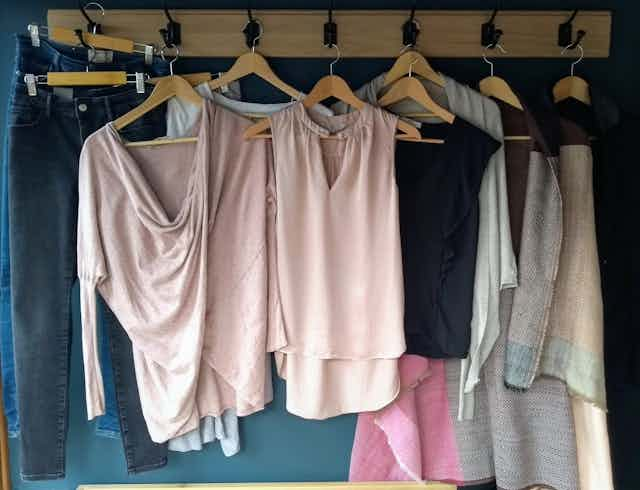The rise of fast fashion has led to huge increases in the amount of clothes made, bought and thrown away. Between 80 and 100 billion items of clothing are made globally each year. Greenhouse gas emissions from textile production are greater than those from international flights and the shipping industry combined, making the fashion industry a significant contributor to climate change.
Yet a survey of UK adults found that 57% of respondents owned new clothes they’d never worn. Meanwhile, less than one in four UK adults cite concerns about the environment as the main reason they would buy fewer clothes.
In a bid to raise funds and highlight the link between the fashion industry and the climate crisis, UK charity Tearfund is launching The Great Fashion Fast this March. To take part you choose ten main items of clothing (with some exceptions such as sportswear, underwear and uniforms) and wear only these ten items for the whole month.
I’m going to be taking part because research has shown that fashion fasts and challenges, where you stop shopping for clothes or only wear a set number of items over a certain period – or both – can have a variety of benefits.
For example, these initiatives can help people develop their personal style and enhance their creativity with fashion. They can also be associated with improvements in self-confidence and stop people feeling pressure to constantly buy new clothes. Studies have shown these challenges can help participants realise that they might not need as many clothes as they once thought they did, move away from previous impulse shopping habits, and encourage more considered fashion purchases in the future.
I’ve previously taken part in UK campaign group Labour Behind the Label’s Six Items Challenge, where you only wear six items over six weeks. As the research suggests, I found it really helped me realise just how few clothes I need. It made picking an outfit each morning incredibly simple, while creating lots of different outfits from only a few items of clothing showed me how versatile just a few pieces can be.
Read more: Read this before you go sales shopping: the environmental costs of fast fashion
Tips for choosing the best items
Along the way, I also picked up some practical tips, which are good to keep in mind if you fancy taking part in a fashion challenge yourself.
When choosing your items, it’s best to try to pick a few matching colours so that everything goes together. For this year’s Great Fashion Fast I’ve picked neutrals – black, grey and white, plus pink (you can see my choices in the photo at the top of the article).
Try to pick different items that can make lots of different outfits. I’ve chosen one coat, two pairs of jeans, one skirt, three tops and three cardigans. The Great Fashion Fast website offers some helpful examples of what sorts of items to pick.
Versatile items that can be layered and worn in different ways are helpful. For example, I’ve got a jumper that can also be worn as a cardigan.
Think about the weather. It’s quite chilly in the UK in March, so I’ve picked a few cardigans that I can layer up if needed.
When doing a fashion fast, it can be helpful to handwash the odd item in the sink so you don’t run out of clothes.

Everyone can make their wardrobe more sustainable
While a fashion fast is great for raising funds and starting conversations about sustainable fashion, if it’s not your cup of tea, there are still plenty of things you can do to support it.
First, try to keep your clothes for as long as possible by washing them carefully and repairing them. For example, bobbles on knitwear can be removed with a razor or fabric shaver, and a small sewing kit can be all you need to sew back on buttons and sew up any holes or tears.
Try to buy second-hand clothes where possible (I prefer the term “pre-loved”). Charity shops, vintage stores, and websites like Facebook marketplace, eBay, Vinted and HardlyEverWornIt are great places to start. Swapping clothes with friends and family can be a good option too.
Have you thought about renting clothes? There are now lots of companies that offer fashion rental based on a subscription service or pay per hire. Renting clothes can be a more sustainable approach for people who like to wear lots of different outfits.
If you do need to buy something new, try to adopt a “quality over quantity” approach so you reduce the overall amount of clothes you own and keep them for longer. Buying higher-quality clothes can be tricky if you’re on a tight budget, so renting or trying to buy good quality secondhand items can be a good way around this.
Read more: Four clothing businesses that could lead us away from the horrors of fast fashion

